- Home
- Peter Matthiessen
The Tree Where Man Was Born Page 2
The Tree Where Man Was Born Read online
Page 2
JANE GOODALL, PHD, DBE
Founder—The Jane Goodall Institute and UN Messenger of Peace
www.janegoodall.org
Author’s Note
The wild creatures I had come to Africa to see are exhilarating in their multitudes and colors, and I imagined for a time that this glimpse of the earth’s morning might account for the anticipation that I felt, the sense of origins, of innocence and mystery, like a marvelous childhood faculty restored. Perhaps it is the consciousness that here in Africa, south of the Sahara, our kind was born. But there was also something else that, years ago, under the sky of the Sudan, had made me restless, the stillness in this ancient continent, the echo of so much that has died away, the imminence of so much as yet unknown. Something has happened here, is happening, will happen—whole landscapes seem alert.
In early 1961, on the way around the world to join an anthropological expedition into New Guinea, I traveled south through Africa, wishing to see the Egyptian temple of Abu Simbel, up the Nile, the warrior-herdsmen of the south Sudan, and the great animal herds of the Serengeti Plains, all of which, in 1961, seemed on the point of disappearance. Traveling overland from Cairo, I got as far south as the Ngorongoro Crater, in the country still known then as Tanganyika. The new Sunday air charter from Nairobi permitted a brief visit to the Serengeti, where I saw the first leopard of my life, loping along among low bushes by a stream; on the homeward journey the pilot flew over the endless companies of game animals on the plain that is the greatest wildlife spectacle left in the world. But animals seen from the air, without the dimensions of sound and feel and smell, remain remote. I had no real sense of having experienced the Serengeti, and when I was invited to return by John Owen, then director of the Tanzania National Parks, I fairly leapt at the opportunity. From late January to mid-March of 1969 I lived mostly at Seronera, where I was very hospitably received by the parks staff and the scientists of the Serengeti Research Institute, set up in 1966 for the crucial ecological studies that will certainly affect the future of man and animal in Africa. Often these men—wardens and scientists alike—took me along on air surveys, field trips, and safaris, and gave me invaluable instruction in African ecology; meanwhile I had my own Land Rover, with four-wheel drive, and the chance to investigate all and everything, as I pleased . . .
Because of the chronic political disorder in East Africa in the decade since this book was published, any attempt at revising the text from a political/geographic point of view would probably be out of date before this edition could be printed; thus, Lake Turkana in Kenya’s Northern Frontier District will be recognized in these pages by its former name, Lake Rudolf. The land and wildlife problems continue in much the same patterns as before.
PETER MATTHIESSEN
The Tree Where Man Was Born
1
THE TREE WHERE MAN WAS BORN
In the time when Dendid created all things,
He created the sun,
And the sun is born, and dies, and comes again.
He created the moon,
And the moon is born, and dies, and comes again;
He created the stars,
And the stars are born, and die, and come again;
He created man,
And man is born, and dies, and does not come again.
—OLD DINKA SONG1
The tree where man was born, according to the Nuer, still stood within man’s memory in the west part of the south Sudan, and I imagine a great baobab thrust up like an old root of life in those wild grasses that blow forever to the horizons, and wild man in naked silhouette against the first blue sky. That bodeful man of silence and the past is everywhere in Africa. One hears the silence, hears one’s step, and stops . . . and he is there, in the near distance. I see him still: a spear point glitters in the sun.
In the south Sudan, man is tall and gaunt, and black as the burnt skeleton of a tree: Dinka, who carves his scars in shallow v’s, and Shilluk with his raised beads of skin in a string curling down toward the ear, and Nuer with six jagged welts, temple to temple—his terrible brows and filed front teeth, jutting like fangs, give Nuer a fixed death’s head grin that is not to be mistaken for a smile. In 1961, a few still wandered as far north as Khartoum, where I first saw them. In mission shorts, they stalked the Arab bazaars of Omdurman, dwarfing the scurrying traders of the suq. Others crossed the Khartoum bridge, near the confluence of the Blue Nile and the White. Oblivious of bridge and rivers, ignoring the horn blare and exhaust stink and shrill shouting of despised beings who owned no cattle, the entranced figures forded the twentieth-century traffic in the single file that would wind southward nearly a thousand miles across desert and river into Equatoria.
To most of the tribesmen, the Sudan government is a foreign power, having come into existence (in 1955) without the agreement or even the knowledge of many of its inhabitants: the desert north is a part of the Arab world while the south, a thousand miles away, lies in black Africa. In 1961, when I traveled south through Egypt and the Sudan into East Africa, these southern provinces—Upper Nile, Bahr el Ghazal, and Equatoria—had been made “closed territories,” since the tribesmen would not heed their Moslem government. No foreigner could pass through without a permit, and no photographs of the naked peoples were permitted. Nor was the journey overland an easy one, for there was no road across the desert, which extends for several hundred miles south of Khartoum. In the absence of scheduled transport, I rode upon the cargo of an old trading truck sent south during the dry season by the merchants of Omdurman, and my bed of potatoes, wire tubing, tinware, and iron doors was shared with two whites met in Omdurman—a young student bound home for South Africa and a bearded American veteran of the Israeli wars with a hidden sheath knife, beret, dark glasses, and gold earring—as well as sixteen mission tribesmen, mostly Dinka and Shilluk, with a pair of Nuer. No matter how we arranged ourselves, we were never in close physical contact with less than five companions, and in the long wait and great heat, morale was low when at twilight the truck started up and set off through streets which even in the poorest towns of the north Sudan are swept clean daily by twig brooms; on a minaret, against a clear pink sky, a muezzin called the faithful to the prayers of evening.
Night had fallen by the time the truck had cleared the city, and a spray of stars froze on a blue-black sky. The vague track wandered south into a soft emptiness of cooling sand haired over thinly, here and there, by bitter thorns of drought. In the headlight’s jogging beam danced ghostly gerbils, hopping and fluttering on tiptoe, like stricken birds. And farther onward, close to midnight, where the sands relented, came the birds of night—the African owl, and nightjars, and pale Senegal stone curlews whirling straight up into the dark like souls departing.
As the night passed, the way grew less distinct. Random tracks leading off into the void were followed faithfully by the driver, who was no Bedouin and knew nothing of the stars. Once the truck halted, and the Moslem cabal in the cab got out their prayer rugs, washed their feet, and in the beam of the headlights, touched their foreheads to the ground. Presumably they were pointed east, toward Mecca, but this did not appear to mean that they knew which way was south, for the truck soon halted once again, having traveled for some time in rude circles; shortly thereafter it was driven remorselessly into a ditch. The passengers leapt from the tilted cargo and stood in a long respectful line while the driver spun his wheels into the earth. When the axles touched at last, he left the truck and joined the line, contemplating the work of Allah with every evidence of satisfaction. Then everybody but the two Americans, who had none, got out blankets and lay down upon the desert.
The cold of the desert night, toward four, was the cold of the dark universe descended. Dawn came at last, and an hour later, a faint warmth; nourished by dusty dates and cold sardines, we dug the truck out of the desert. Solitary figures, white shrouds blowing, wandered the landscape; the brown lumps of their habitations merged with a stony rise a mile away. Near the ditch grew a thi
n grass, but elsewhere, as far as the eye could see in all directions, stretched sere distances burned off to gravel.
In the old millenniums of rain during the Pleistocene and after, much of this waste had been well-watered grassland. Years later, flying at dawn from Rabat on the Atlantic coast and drifting southeast over endless red infernal reaches of gravel, windspun sand, and smoky sky, I would see the ancient rivers of the Ice Age, like fossil tracings in the sands of the Sahara. Hunters had once wandered there, and left red drawings on those rocks, but now there was no sign of life, no track. Seven millenniums ago, when men of Asia brought wheat and barley, sheep and goats, to the lower Nile, the desert was already spreading, and the work of drought was rapidly advanced by the goats of man, which ate the thorn that had sewn tight a land that soon unraveled into sand.
The Stone Age hunters found by the Asians are known as the Tasarians and Bedarians, and the Afro-Asiatics born of these encounters raised villages on the flood plains of the Nile that would become the dynasties of Egypt. Until now, Africa had known no agriculture, nor any domestic animal except possibly the dog. But in the next one thousand years native plants were domesticated in West Africa, and certain millets in the highlands of Ethiopia. By 3500 B.C., domestic stock appears to have passed into the hands of the West African Negroid peoples, perhaps by way of traders from the Mediterranean who were already opening up the great north-south caravan routes across the Sahara. Advanced cultures had rapidly developed in West Africa—the Nok culture is thought to have begun well before 2000 B.C.—but although some trade no doubt continued, the peoples of Bilad al-Sudan—Land of the Blacks—were little affected by the surge of Mediterranean civilizations. Domestic animals and a few plants had been acquired, but the age of bronze went by without their knowledge. Even the use of iron that had reached the Cush kingdom of Meröe, not far north of Khartoum, by 300 B.C., took another thousand years to reach the tribesmen of the south Sudan, for the desert between the Nile and the mountains of Ethopia was all but impassable, and travel on the river was impeded by the vast riverain swamp known as the Sudd, which prevented the extension of Egyptian splendors into the south and marked the southern limits of the Roman Empire. The Romans were still able to graze animals on what are now the sands of Libya, and Alexandrian ivory traders, mentioned in Ptolemy, brought back reports of the great central lakes and what are thought to be the snow-capped Ruwenzoris, the Mountains of the Moon, but few Mediterranean invaders got farther than that part of the Sahara called the Nubian Desert, an hallucinatory void burned by bright winds. What was left of the North African pastures was destroyed by hordes of Bedouins who swept through the northern continent ten centuries ago; today a few Arabs and sad donkeys cling to dim sand-strangled outposts, and a rare caravan of camels navigates by the lone railroad track that comes to Khartoum across the waste from Wadi Halfa.
As the day went on, the camels vanished from the sand horizons. Close to the Nile, the desolation was offset by a haze of grass behind the river banks, but this is a land of bare subsistence where the threat of drought is made worse by the desert locust. Today the sun had become fierce, and the bare land a reflector: distant huts turned eerily in a melted sun, like igneous lumps in the lava seas of a volcano. At the huts where the truck stopped to trade and cool its tires were hordes of a non-biting fly that seeks out moisture at the eyes and mouth. The flies formed black rings on the eyes of the small children, giving them a haunted appearance, but only the very smallest fretted, the rest having learned the resignation to discomfort that was so noticeable in the tribesmen on the truck. The “Europeans,” as whites are known in Africa, were much less stoic. The damp touch of the flies, in company with heat and filth and a cumulative fatigue, brought on a half-delirium of thirst and soreness. We fashioned poor turbans out of rags, but the light refracted from the burnished land seared our faces to masks of leather. The Sudanese went bareheaded without complaint, but the Israeli veteran turned a dangerous color: with his dark glasses and rag-tattered head, he glared out over the land like some sort of mad avenger. And the South African boy, the only white to demonstrate with the African students in London after the notorious Sharpeville Massacre in his own country—he spent three weeks in jail for his pains—whose nerves, giving way in the press and stench of his multicolored kind, brought forth the very phrase of the colonials that he had quoted earlier in contempt: “These bloody niggers, they’re just down out of the trees!” He laughed at himself, close to tears, so shocked was he by his own outburst, and so relieved that these tribesmen spoke no English. Yet the Africans, who had learned that he came from the country of apartheid and were by no means blind to his ambivalence, plainly preferred him to the soldier, who was truly democratic in a way that few whites are, and recommended himself, besides, by an overt hatred for the Arabs in the cab, whom these tribesmen hated also: the Arab trade in slaves, which devastated the south Sudan in the nineteenth century, has never been forgotten or forgiven. But the soldier was beyond their ken, not the beret and beard and earring but because he kept no tribal distance, observed no protocol. Intensely conservative, fearful especially of the bizarre, the Africans glowered at the pantomimes and clowning that he offered as a means of communication. Caught up by the anti-white fever sweeping Africa, they felt patronized or even threatened, and were forever on the watch for foreign attempts to encroach upon native territories from the imperialist enclave set up just behind the cab, out of the desert wind. But the soldier tried and tried again, refusing to see that his friendliness gave offense, that these carved masks might have been just as suspicious, perhaps more so, of his black friends in America, who were also westerners, with a makeshift western sense of life and death.
Gradually the square huts of mud-brick were replaced by the African beehive hut, a cylinder of mud and sticks topped with straw thatch bound tight into a cone. In mid-afternoon, the truck reached Kosti, where we sat waiting in the suq for the sun to die. Kosti has what might be called a sewing-machine economy; ancient specimens of these instruments, in the smaller villages, are ordinarily the sole evidence of the machine age. We ate strange local sheep off doubtful ware, drank the black tea of the desert, and in the late twilight, started off again, traveling onward intermittently until after midnight, when once again we lay down upon the ground. The night was warmer, warm enough for the mosquitoes, and it came to an end at last. During the night, the hippos bellowed from the Nile, a distant sound, the first murmurings out of the heart of Africa.
The first light shone on a new land of long grass and small acacia, with occasional great solitary baobab. The feather-leaved, sweet-scented acacias or thorn trees, in their great variety, are the dominant vegetation in dry country south to the Cape, but the tree of Africa is the baobab, with its gigantesque bulk and primitive appearance; it is thought to reach the age of twenty-five hundred years, and may be the oldest living thing on earth. The grassland danced with antelope and birds—tropical hawks, doves, pigeons, guinea fowl and francolins, bee-eaters, rollers, hornbills, and myriad weavers, including the quelea or Sudan dioch, which breeds and travels in dense clouds and rivals the locust as an agent of destruction. At the edge of a slough stood two hundred crested cranes and a solitary ostrich, like a warder; where trees gathered in a wood were the white faces of the vervet monkey. In the afternoon, the savanna opened out on a great plain where gazelles fled to the horizons, and naked herdsmen, spear blades gleaming, observed the passage of the truck through the rushing grass with the alert languor of egrets. All the world was blue and gold, with far islands of acacia and ceremonial half circles of human huts. Toward dusk, the truck arrived at Malakal, where it would turn to go back into the north.
The two days passed in Malakal, awaiting a ride south, I spent mostly on a long peninsula which cut off a swamp along the Nile edge. There was a footpath to a point on the peninsula where a Shilluk tended a weir; from here, in crude dugout canoes, the tribesmen crossed the river to a large village in a grove of palms. Respecting crocodiles, I did n
ot press to be taken across, for the north wind which blows from November to March was sweeping up the river, and the canoes were desperately overcrowded; instead I watched the people come and go, and listened to the singsong of their voices. Shilluk women who passed along the path bore cargoes on their heads, swaying like cobras through the blowing grass, and bands of girls, straight-backed, high-breasted, flirted and waved. The men were painted in a gray ash or red ocher, and the oldest had several rows of beads raised on their foreheads, but scarification, which is performed at a boy’s initiation into the tribe, is dying out, for few younger men had more than a single row, and some were not scarred at all.
From the village across the river, on the wind, came a chant and a thump of drums. On the peninsula, bent figures hoed small gardens, and in the swamp behind, two naked fishers, laughing and arguing, handled a cast net. Cisticolas flitted through fierce reeds, and a snake slid out across some rotted sedge into the water, and trees of the river danced with turquoise rollers. In such a setting, in the expectant sunrise, the naked men seemed archetypal: here were dark figures of prehistory. A few centuries ago, the Shilluk lived as far north as Khartoum, and perhaps these glistening fishers were descended from some of the earliest known Negroids, a community of Middle Stone Age fishermen who inhabited the Khartoum region at least seven thousand years ago. (It has been suggested that the Khartoum fishermen invented pottery, possibly through the accidental burning of the mud-lined baskets that are still in use.2) The early Negroids appear to have been scattered and few; perhaps they were sedentary fishermen whose modern dominance of the African population came about with the development of agriculture. Possibly they evolved in the central lakes region, and only later came to occupy those regions southwest and west of the Sahara which are now associated with the “true Negro,” whoever that may be: a skull contemporaneous with the skulls found at Khartoum has been dug up northeast of Timbuktu, in a land which had not yet turned to desert, and other remains of ancient Negroids have been found in Nigeria and on Lake Edward.

 Lost Man's River: Shadow Country Trilogy
Lost Man's River: Shadow Country Trilogy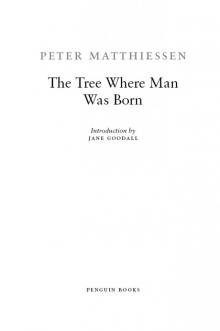 The Tree Where Man Was Born
The Tree Where Man Was Born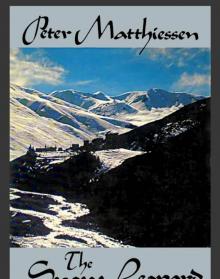 The Snow leopard
The Snow leopard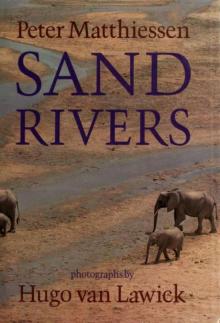 Sand Rivers
Sand Rivers The Cloud Forest
The Cloud Forest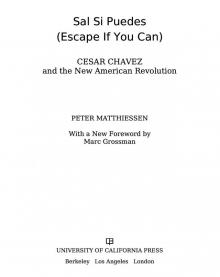 Sal Si Puedes (Escape if You Can)
Sal Si Puedes (Escape if You Can)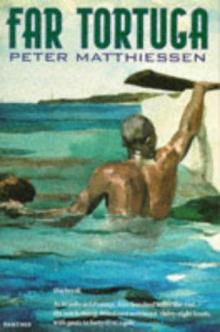 Far Tortuga
Far Tortuga Men's Lives
Men's Lives On the River Styx: And Other Stories
On the River Styx: And Other Stories Shadow Country
Shadow Country At Play in the Fields of the Lord
At Play in the Fields of the Lord Lost Man's River
Lost Man's River Killing Mister Watson
Killing Mister Watson On the River Styx
On the River Styx